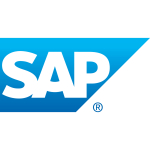It's very easy to import data and also to create formulas and so on. In that sense, it's really easy and friendly. Also, it made creating charts, and especially, for example, the bubble charts, really easy and very powerful.
I've been creating metrics that show variances, for example, in surgery times and supplies used in surgeries, and also in expenses, analyses of expenses. That has helped me a lot. What I presented was really, really impressive for the rest of the team.
It would be valuable if I could more easily share what I do. Right now, where I work, we have SAP BusinessObjects, but there's no way to easily store on a server and share. If we could store models I create in a folder that I could share. Sharing is something that I think should be improved.
Also, because Lumira saves directly to your My Documents folder, it stays in your C: drive. That means I cannot simply share it with the team in my department. They have to make it easier for you to store in any folder, not just My Documents, because My Documents is on my C: drive, and that makes no sense. I thought, "Why did they do that?"
Another thing that should be improved is the connection, the ability to use different sources in the same model. I think Lumira can do it, but it's not easy. We don't have HANA, so I cannot easily access any of the queries I have in BusinessObjects. I have to go to BusinessObjects, export to Excel, and then input the Excel file into Lumira.
Not being able to use data that is updated continuously is something that really bothers me, because I have to keep remembering, "I have to update this, I have to update this." I know that the refresh works, it refreshes and it's really really good.
Also, sometimes it doesn't input data, which is really important. For example, if there is an Excel file that is really big, like 1GB, it was just unable to input it. I just couldn't work with it. The file I was using was perfect. The file didn't have any blocks or something like that. I don't know why it didn't input that one.
Also, if you have one visualization, and you want to show several areas or windows that you can resize and so on. With Lumira, it's very difficult to resize it because the areas are square. It's not like what I had before.
I would like to see them improve the format of the text that you use, so you can play more with fonts, and put more information on one screen.
I had been using the solution for maybe a year and a half.
I did not encounter any stability issues. It's a stable product. Once you import the data and you start working with it, it's very stable.
I don't use it for high volumes right now, because when I started to input big files, it was not possible to work with it. It took too long or it didn't input at all. I found that limit. I don't want to have issue because we use very big files. Sometimes we want to analyze three or four years of data, and those are big files. Lumira is not good at that at this moment.
I haven't really had to use support. I didn't ask for support because the tool is easy to use. I don't know if support is good or not, because I haven't used it.
I didn't have to call them, because the training videos that they have are really good. They are very clear and very easy to follow. They cover a lot of areas, so that's maybe why I didn't ask for any support. Every time we needed something, I went to the videos and I learned how to do it.
I used SAP Dashboard Designer, and switched because SAP Dashboard Designer is too much work. Every time, if, for example, you have the data through May, and then the June data arrives, you want to update it. Your source file updates perfectly, but the chart doesn't update. It doesn't create that additional column. You have to go into the setting and change it. It's a lot of work. I was working with that, maybe, for two to three years. I created like 200 visualizations of different areas, but then I said, "No".
With Lumira, if the data updates, it updates my model, but in SAP Dashboard Designer it doesn't do that.
Initial setup was basically straightforward. It was easy, really easy. There was no problem with that. I already had a Lumira personal edition that I bought for me. I have it on my personal computer at home. I started it with no issues. The one we have in the hospital, the guys in IT, they installed it very easy, so that's not an issue.
Lumira was very useful for me, but now I have more needs, and I have to move faster because I am responsible for a lot of data, and a lot of information that I have to provide to the directors and VPs. I need a tool that works really fast and that allows me to build like a master.
Power BI is the tool I was looking for, so I stopped using Lumira completely, because the software from Microsoft is exactly what I wanted. The connections and the way I save and everything is something that I was looking for. With Lumira, it's a lot of work and everything has to be in Excel most of the time anyway. I need to connect directly between my databases. That's my experience. For now, Lumira works fine, but I couldn't do what I do now, combining different files and things like that easily. That's my experience.
When I compare Lumira with the other software that I'm using now, Power BI, I see that Power BI does it in such a friendly way and it covers every need. For someone like me who is in business analysis, Power BI gives me exactly what I need.
It's really user-friendly.






